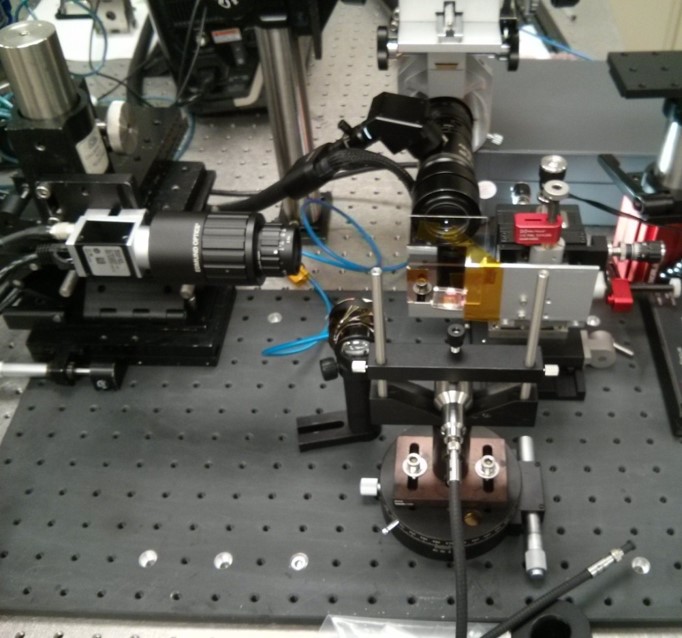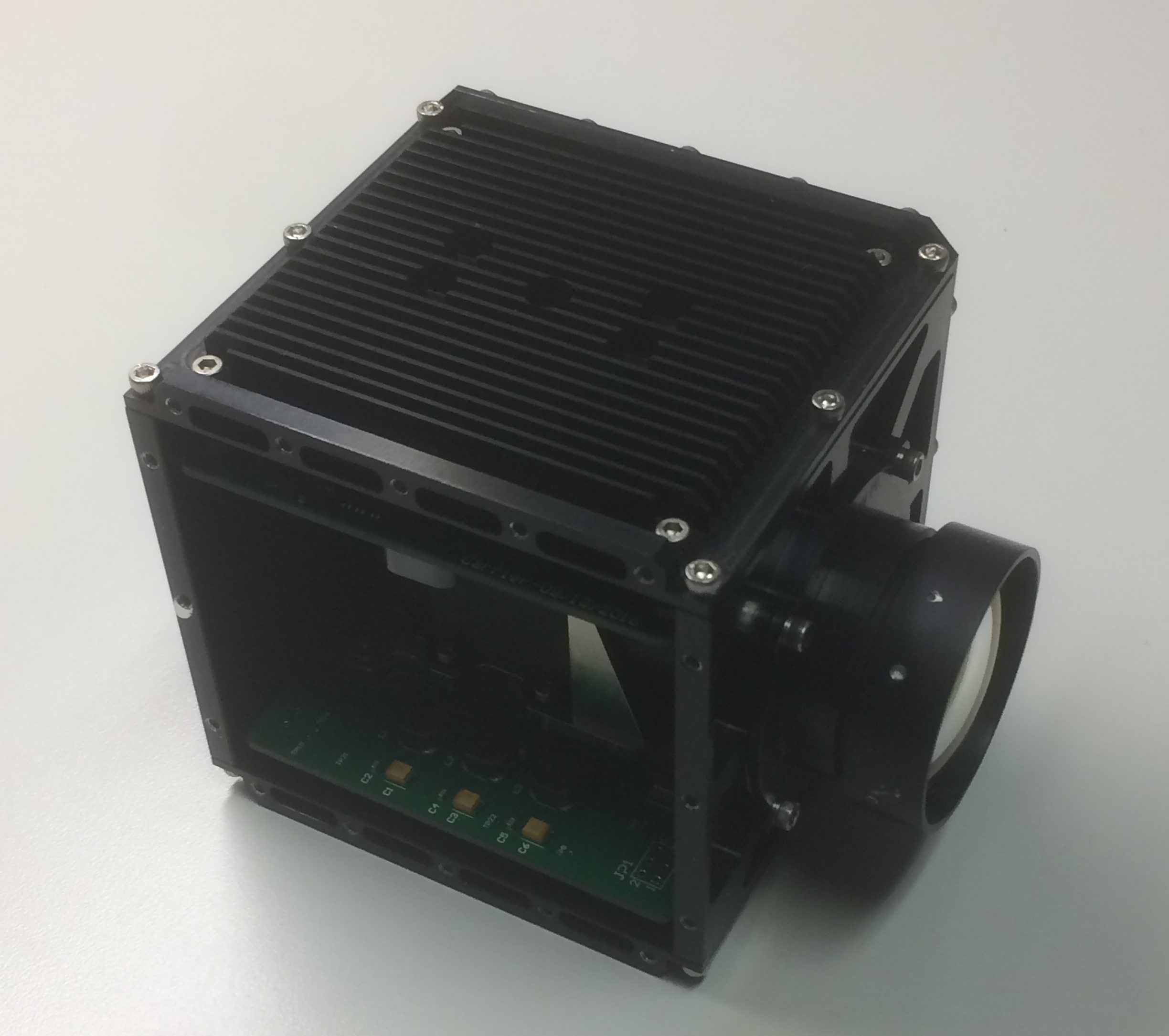For Honeywell, when it comes to spectrometer sensor technology, space is not the final frontier. In the past, its aerospace division engineered sophisticated instruments for scientists to measure the reflected sunlight of a planet, and determine the concentrations and flow of carbon dioxide and methane gas pollution in the earth’s atmosphere. The company’s space programs have also spun off into other applications, such as exactEarth – a satellite data service that tracks maritime vessels globally for the purposes of traffic management, safety, pollution, and security.
In recent years, the company has begun utilizing the technology for conservation efforts. As Dr. Ian D’Souza, a scientist working in R&D at Honeywell’s Cambridge, Ontario site explains, “Honeywell is investigating how its space sensor instrumentation can be adapted to help in the effort to save critical environmental resources here on Earth.”
Where the satellite instruments have enabled the company to study the earth’s atmosphere, track forest fires, measure the magnetic field due to currents in the earth’s ionosphere, and even transmit broadcasts to the NASA Casinni spacecraft in orbit around Saturn, the SOWC’s Advancing Water Technologies (AWT) program will support Honeywell’s extensive pilot development to adapt its Raman laser spectroscopy hardware for water pollution monitoring.
The AWT program connects businesses in Ontario with academic experts to develop and demonstrate water technologies for successful introduction to the market. For this project, SOWC paired Honeywell with Dr. Elodie Passeport, an Assistant Professor of Environmental Engineering at the University of Toronto. The $100,000 in AWT funding will allow Passeport to support a research postdoctoral student, lab consumables, as well as specialized equipment toward overseeing pilot testing of the modified spectrometer.
Using space technology that incorporates miniaturized optical waveguide technology to develop a light and portable handheld device, Honeywell reduced the overall size of the sensor. “A typical spectrometer is ubiquitous on satellites and Mars rover vehicles for activities such as studying rocks and minerals,” D’Souza says. “But large format spectrometers are ill-suited for the type of field work activities related to on-site water monitoring that might require portability.”
Another water-specific modification is the technology’s laser functionality. “Since water does not emit light, you must fire a laser at it and analyze the resulting emitted light spectrum,” D’Souza says. “The wavelengths vary depending on chemical composition.”
The instrument’s sensor has exceptional sensitivity. “Honeywell’s technology is sensitive from the visible to ultraviolet wavelength range, which is a major advantage,” Passeport says. “Our pilot testing will initially screen for nitrate and phosphate – nutrients that in particular contribute to eutrophication, which can generate the development of harmful algal blooms in rivers and lakes.”
For Passeport, a secondary benefit of the added laser is that it overcomes the need to immerse the sensor in water. “Current sensors need submersion to work, which requires frequent cleaning,” she says. “Contact with bacteria in the water causes viscous film buildup to appear over time, which can negatively affect the sensor’s accuracy.”
As well, for wastewater treatment plants and environmental operators, one of the more enticing aspects of the tool will be its capacity for continuous monitoring.
“Typically, a user must bring back water samples to a lab for analysis,” D’Souza says. “However, this method is impractical because it incurs massive gaps in data analysis, which is especially detrimental in the context of an inclement event such as a rainstorm where chemical composition can change swiftly.”

The glass plate in the centre of this image is a new innovative high resolution Raman micro-spectrometer under test at Honeywell. Copyright: Honeywell
The AWT-funded pilot testing of these features is still in the early stages. The first phase will be to establish a clear signal for nitrate and phosphate since the sensor will also capture background pollutants and other variables. “The laser excites everything in the water, so you have to decompose the spectrum to determine the sum of each variable being shown in the feedback,” D’Souza says.
“The first step is to test the sensor in a controlled lab setting testing for seawater, wastewater, wetland water scenarios, and other types of water,” Passeport says. “Once the sensor has been tested and validated, the next stage of the pilot is to test it out in the field at the Ashbridges Bay wastewater treatment plant in Toronto.”
If detection for simple chemical compounds such as nitrate and phosphate proves successful, the trials will be used as a baseline for other types of contaminants.
“The laser functionality of the spectrometer has the potential to detect chemicals such as pesticides, pharmaceuticals, and personal care products,” Passeport says. “These emerging contaminants can disrupt the endocrine production of hormones, and therefore pose a notable risk to human and ecosystem health.”
D’Souza says that he is thrilled with the collaboration so far and grateful for SOWC’s involvement.
“Honeywell (previously COM DEV Ltd.) has had a longstanding relationship with SOWC, who has helped introduce us to key groups in the Canadian water community and allowed us to gain sector traction,” he says. “As well, the AWT program is an excellent way to bring together academia and industry. Everyone benefits: the company gets to leverage lab expertise toward developing an end product; the university gets to hire a postdoctoral fellow to carry out research.”
Passeport shares Honeywell’s sentiment on SOWC’s matchmaking. “Our team expressed interest in applying to the AWT program more than a year ago, so when Honeywell was in search of an academic partner, SOWC identified a right fit between the University of Toronto lab and the monitoring prototype being developed,” she says.
“Personally, this AWT project gave me the opportunity to work with a new industry partner that I may not have had access to otherwise,” Passeport says. “Plus, this project is taking my research in new directions: While I have worked with passive samplers for collecting water, this is the first time my lab will be working with on-site continuous monitoring sensors, which my team and I are very excited about.”
Beyond the scope of current funding, a future pilot may test whether the spectrometer can detect plastic such as microbeads in water samples. D’Souza says that the goal is to figure out global applications and projects beyond Canadian borders.


